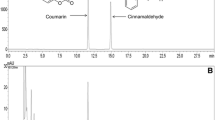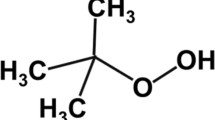Abstract
Tris(2-chloroethyl)phosphate is used as flame-proofing additive in polyurethane foam and paints. The substance was not mutagenic in the Salmonella/microsome test in 6 of 7 studies, two of which were performed on behalf of BG Chemie as part of its 'Programme for the Prevention of Health Hazards Caused by Industrial Substances'. No mutagenic potential has been detected in mammalian cells in vitro (mouse lymphoma test, reverse mutation and HPRT test). The substance produces no chromosome aberrations in vitro, but does cause questionable to significant increases in the sister chromatid exchange rate. Two in vivo micronucleus tests performed on behalf of BG Chemie have given no indications of clastogenicity, while a further test was inconclusive. A test involving Drosophila (interchromosomal mitotic recombination) was also negative. Overall, tris(2-chloroethyl)phosphate appears to have no genotoxic potential. According to the EU (European Union) classification criteria, the substance has not been classified as mutagenic in Germany. Summarising the existing studies on the carcinogenic potential of tris(2-chloroethyl)phosphate, kidney tumours as well as tumours of the Harderian gland were present at below the maximum tolerable dose, the kidney tumours arising in two different species (rats, mice) and in mice in two studies. These tumours do not spontaneously occur, and their incidence was also increased in comparison with historical control data. However, only at systemic toxic doses was the incidence of carcinomas of the kidney significantly increased. Below systemic toxic doses, only the benign kidney tumours were significantly increased, but this was dose-dependent. In conclusion, the data show a carcinogenic potential of tris(2-chloroethyl)phosphate, possibly with an epigenetic mechanism. A supporting indication is provided by two of three in vitro cell transformation tests with positive results. Therefore, the carcinogenicity has been classified as EU category C2 in Germany. Tris(2-chloroethyl)phosphate is not embryotoxic or teratogenic in rats with oral administration, even at doses that are maternally toxic, and does not impair postnatal development in the offspring. Accordingly, the developmental reproductive toxicity has not been classified in Germany. However, the substance adversely affects sperm and its motility with subchronic oral administration to rats and mice. Toxic effects on reproduction were seen in both generations in a 2-generation study in Swiss CD1 mice. The classification of the reproductive toxicity, endpoint fertility, has been suggested by BG Chemie to be RF2 according to the EU classification criteria, which is still under discussion and will be concluded by the time of the congress (in the meantime, the substance has been classified as RF2 in Germany.) There were no indications of skin-sensitising potential in a Buehler test in guinea pigs. Accordingly, no classification is necessary.
Similar content being viewed by others
Author information
Authors and Affiliations
Rights and permissions
About this article
Cite this article
Beth-Hübner, M. Toxicological evaluation and classification of the genotoxic, carcinogenic, reprotoxic and sensitising potential of tris(2-chloroethyl)phosphate. Int Arch Occup Environ Health 72 (Suppl 3), M017–M023 (1999). https://doi.org/10.1007/PL00014210
Issue Date:
DOI: https://doi.org/10.1007/PL00014210




